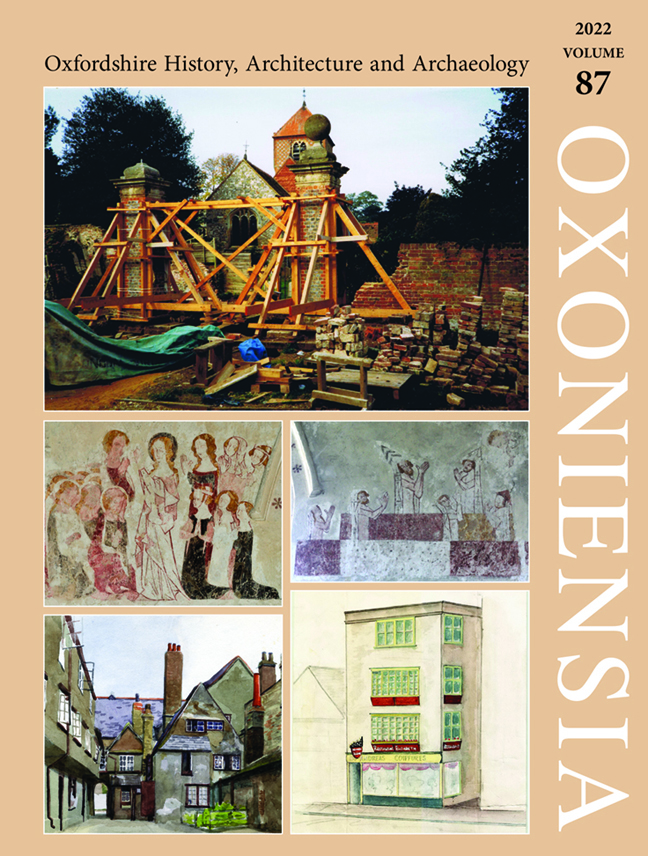The Portable Antiquities Scheme in Oxfordshire, 2021
Published online by Cambridge University Press: 17 February 2024
Summary
In 2021 the PAS logged 29,443 entries recording c.45,590 artefacts across England and Wales and reached over 1.5 million total finds recorded across over 1 million records. The number of treasure cases remained broadly consistent with the preceding year, with 1,021 cases reported from England alone. The covid pandemic has continued to affect outreach and recording by the scheme. In Oxfordshire the pandemic limited outreach primarily to pre-booked appointments for finders of artefacts during those periods where COVID-19 restrictions were relaxed and occasional finds surgeries held at metal-detecting clubs.
OXFORDSHIRE FINDS PROFILE
In 2021 a total of 1,409 artefacts were recorded in 1,329 records for the county. This represents c.80 per cent of the number of finds found in the previous year, undoubtably due to the COVID-19 pandemic, although the number of finds recorded from the county has not been as negatively affected as nationally. Forty-three treasure cases were reported which is consistent with the number of cases recorded from 2019 and 2020.
In 2021, 139 of the county's 323 parishes had at least one find reported from them (Fig. 1) with three having artefacts recorded for the first time, namely South Newington, Adwell, and Chastleton. As a result, only twenty-three parishes are now lacking any finds on the PAS database (Fig. 2).
Overall, the profile is similar to those of all finds reported in the county since the inception of the PAS. Roman period artefacts were, once again, the most numerous finds reported in Oxfordshire, making up 42 per cent of all records and artefacts recorded in the region, followed by post-medieval and then medieval finds (Table 1). Coins represent just under half the assemblage, with the next most frequent object types (brooches, buckles and tokens) representing far smaller proportions of the total assemblage.
SELECTED FINDS
Late Bronze Age Copper Alloy Bracelet from Chinnor (OXON-F05906)
This bracelet is oval in plan with expanded terminals that appear to lack decoration. Similar copper alloy bracelets have been found in the late Bronze Age hoards at Auchtertyre, Morayshire, St Ishmael in Camarthenshire, Northumberland, near Lancaster, and Stourmouth (Kent), each associated with late Bronze Age artefacts dating to the Ewart Park phase (c.950–800 cal BC). This example helps confirm the distribution of complete examples is not limited to the extremities of Britain.
- Type
- Chapter
- Information
- Oxoniensia , pp. 455 - 460Publisher: Boydell & BrewerPrint publication year: 2022

